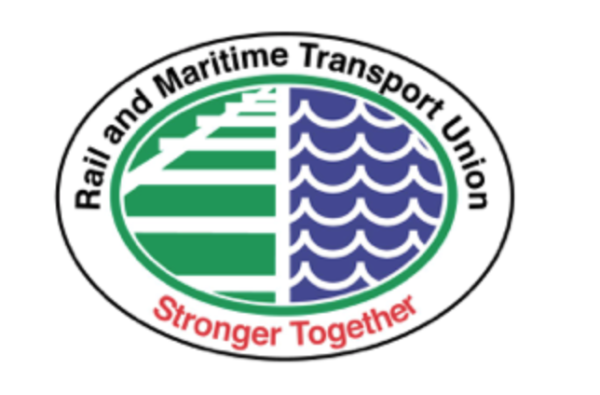
The Rail & Maritime Transport Union welcomes the decision to keep KiwiRail’s electric locomotives running on the North Island Main Trunk.
The government has honoured its campaign pledge, committing an extra $35 million to refurbish the 15 electric engines currently in operation between Hamilton and Palmerston North.
“We’re thrilled to see the Labour-led government protecting Kiwi jobs,” says RMTU General Secretary Wayne Butson.
“Union members, environmental campaigners and industry experts have all spoken out about the importance of investing in electric rail, and we clearly have a government that listens to the people.”
If KiwiRail had been permitted to go ahead with its plans to replace the EF Class electric locomotives with DL class diesel engines imported from China, it would have added an extra 12,000 tons to New Zealand’s carbon footprint while jeapordising local jobs.
The plans were announced in 2016, despite internal studies suggesting the DL locomotives are unreliable, overly expensive and at risk of asbestos contamination.
“Our position has always been that New Zealand must electrify more of our rail network, not less,” says Mr Butson.
“The highly skilled workforce in KiwiRail’s workshops can now build a modern, sustainable fleet of locomotives that will be the envy of the world.”
The RMTU and its allies in the International Transport Workers Federation are part of the Trade Unions for Energy Democracy initiative, a global campaign to prevent damage to the environment, create green jobs for transport workers and campaign for climate justice.


Is shipping freight by rail and water better for the environment?
YOU SHOULD KNOWN THIS FIRSTLY, FOR “INFORMED CONSENT”
https://phys.org/news/2018-10-shipping-freight-rail-environment.html
October 11, 2018
Is shipping freight by rail and water better for the environment?
October 11, 2018 by Cody Januszko, Carnegie Mellon University Department of Engineering and Public Policy
Transporting freight by road accounts for around seven percent of the world’s total energy-related carbon dioxide emissions. Recognizing that heavy road freight is particularly hard to decarbonize, Carnegie Mellon University researchers have published a paper to review the ways that goods can be transported via alternate means, such as by rail or water, to reduce both emissions and energy use.
In a recent paper, Decarbonizing Intraregional Freight Systems with a Focus on Modal Shift, published in Environmental Research Letters, a team of Carnegie Mellon Engineering and Public Policy (EPP) researchers, led by EPP Ph.D. student Lynn Kaack, explore strategies for decarbonizing freight transportation and policies to encourage the shift. The team also included Wilton E. Scott Institute for Energy Innovation faculty affiliates Parth Vaishnav, M. Granger Morgan, and Inês Azevedo.
The paper assesses the opportunities and barriers to decarbonizing freight by using several different strategies: reducing the demand for freight, optimizing vehicle use and loading, increasing the efficiency of these vehicles, decreasing the carbon content of fuel used to transport freight and shifting freight to low carbon-intensity modes of transportation. The authors refer to this last strategy as a modal shift—the primary focus of their paper.
In it, they write, “We emphasize that the deep decarbonization of the freight sector can only be achieved by combining modal shift with multiple other strategies, such as energy efficiency, switching to fuels with low or net zero carbon emissions, and improving operational efficiency.”
Not only is lowering the demand for freight transportation exceedingly difficult, the team states it is not even clear that doing so is desirable, since the transport of goods is linked to economic vitality. The transportation sector could reduce its emissions by routing and packing trucks more efficiently and training drivers in efficient driving techniques.
“In the U.S., railroads own their own tracks, so they have to build their own infrastructure,” says Vaishnav, an assistant research professor in EPP. “Trucking uses public infrastructure, but does not bear the full cost of the damage heavy trucks do to roads and other infrastructure and indeed to the environment.”
According to the article, rail and inland water are less carbon intensive than roads, but inland water may in some places produce more carbon emissions than rail and ocean shipping. Although many rail systems in the world are electrified, U.S. freight trains run on diesel. The team suggests lowering emissions further by electrifying our rail systems, although this is very costly. In a similar fashion, electric vehicles and electrified roadways could also decarbonize road freight, although this is also expensive and the technologically is difficult to achieve.
To encourage transitions to these lower-carbon options, the team recommends that policymakers put in place incentives to discourage road freight through tolls and taxes, and should support the construction of intermodal terminals that allow for shipments to be kept on rail as long as possible, before being efficiently and reliably transferred to road for last-mile delivery.
“Freight transportation is responsible for a large share of greenhouse gas emissions,” says Kaack. “We urgently need a stronger political focus on decarbonizing freight.”
Explore further: Driving down freight emissions
Journal reference: Environmental Research Letters
Provided by: Carnegie Mellon University Department of Engineering and Public Policy
Comments are closed.